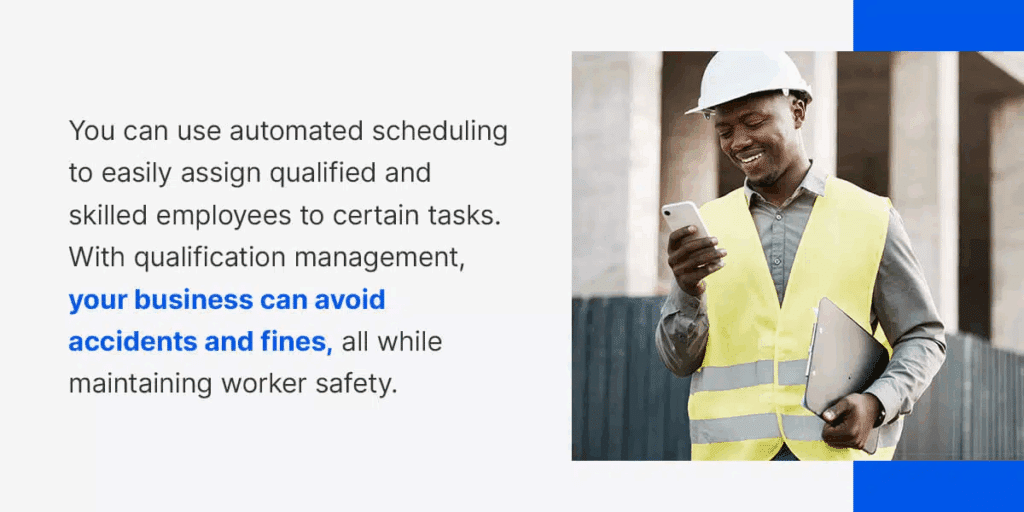The oil and gas industry has long been a leader in technological innovation. From seismic data analysis to SCADA systems to predictive maintenance, the sector has embraced digital transformation to drive efficiency and ensure operational continuity. Companies in the industry continue to invest heavily in oil and gas software solutions that optimize physical assets, ensure environmental compliance, and monitor production performance in real time.
But amid this push for innovation, there’s a blind spot that could be silently undermining those investments: workforce management.
The Current State of Oil and Gas Software Solutions
A typical oil and gas organization relies on a wide variety of digital tools. Enterprise Asset Management (EAM) software keeps tabs on expensive infrastructure. Environmental, Health, and Safety (EHS) platforms help reduce risk and maintain regulatory compliance. Telemetry systems provide real-time performance data from remote sites, while predictive maintenance tools identify issues before they result in costly downtime.
All these oil and gas software solutions play a critical role in keeping operations safe, compliant, and productive. But few of them address one of the most complex and variable components of the business—its people.
Most companies still handle labor scheduling, absence tracking, and compliance manually or with disconnected point solutions. And as the complexity of operations increases due to tighter regulations, labor shortages, and volatile demand, this oversight becomes more than just a nuisance. It becomes a risk.
The Workforce Blind Spot
Labor often gets left out of digital conversations. Executives may assume that ERP systems or basic timekeeping tools are sufficient. But the reality is, many oil and gas organizations are managing workforce logistics on spreadsheets or siloed platforms that can’t keep up with the pace of change.
Consider the consequences of this blind spot:
- Over-reliance on overtime leads to budget overruns and increased safety risk.
- Non-compliance with labor laws and union rules can result in fines, audits, or litigation.
- Skills underutilization reduces productivity and slows response times to operational needs.
- Fatigue-related incidents become more likely when schedules are built without consideration for rest periods or demand fluctuations.
This oversight isn’t just operationally inefficient, it’s expensive. According to a Harvard Business Review analysis, companies can lose up to 20% of their total productive capacity due to poor workforce planning and scheduling inefficiencies. In an industry as capital-intensive as oil and gas, this translates to millions of dollars in unrealized value each year.
While asset management and production monitoring are optimized through oil and gas software solutions, workforce planning remains stuck in the past.

Why Add Workforce Management to Your Tech Stack
In any high-risk, high-cost industry, labor is one of the largest controllable expenses. Yet it is often the least optimized. For oil and gas companies, workforce inefficiencies aren’t just about dollars, they’re about downtime, safety, and compliance.
Modern oil and gas software solutions should not stop at asset control or compliance reporting. They should include tools that empower organizations to:
- Automate complex, rules-based scheduling
- Plan labor in alignment with forecasted demand
- Assign personnel based on certifications and skill sets
- Reduce administrative burdens tied to time-off and overtime requests
- Respond quickly to unplanned absences or surges in demand
As workforces become more dynamic and labor expectations shift, it’s time to treat workforce management with the same level of strategic importance as other operations. Integrating workforce solutions into your broader technology ecosystem is no longer optional; it’s a critical part of resilience.
How Indeavor Fills the Gap
At Indeavor, we’ve built workforce management software specifically to close this digital gap. Our platform complements your existing oil and gas software investments by bringing labor into the digital fold. In turn, providing real-time visibility, automating complex processes, and supporting compliance with internal, regulatory, and union requirements.
Here’s how Indeavor supports your workforce strategy:
- Automated Scheduling: Configure rules based on fatigue, skill qualifications, union constraints, and more, then let the system handle the rest.
- Skills-Based Scheduling: Ensure that only qualified, certified individuals are assigned to sensitive or regulated tasks.
- Labor Demand Planning: Forecast labor needs and ensure alignment with operational goals.
- Absence & Call-Off Management: Reduce last-minute disruptions and call-in chaos through 24/7 tracking and response.
- Fatigue Management: Enforce rest requirements and mitigate risk by limiting consecutive shifts, managing work-hour thresholds, and integrating fatigue risk policies directly into scheduling logic.
- Compliance Reporting: Instantly generate reports to satisfy auditors, regulators, and internal stakeholders.
Imagine a scenario where an oil and gas company decreases unplanned overtime costs by 7%, and total overtime costs by 19%. That’s not hypothetical, it’s a typical result of implementing a modern workforce management solution like Indeavor.
Making the Business Case for Labor Digitization
The business case for upgrading oil and gas software is often built around asset protection or regulatory efficiency. However, labor plays an equally critical role in achieving these outcomes. By investing in labor digitization, companies can significantly reduce overtime costs, minimize shift vacancies, and improve scheduling accuracy, directly impacting the bottom line.
Digitized labor processes also strengthen compliance efforts by lowering the risk of grievances, regulatory violations, and failed audits. At the same time, employee experience improves through greater transparency, mobile self-service capabilities, and more predictable, balanced schedules that support well-being.
Additionally, productivity gains emerge as organizations better align labor resources with operational demand and individual skill sets. According to Gartner, organizations that successfully digitize workforce management can increase operational efficiency by up to 25%. A substantial edge in a margin-sensitive industry like oil and gas.
These combined benefits directly support broader goals around operational excellence, safety, and risk mitigation. Labor digitization is no longer a siloed HR initiative, it’s a strategic necessity.

Final Thoughts
The digital transformation of oil and gas software is incomplete without workforce management. Asset tracking, compliance, and performance monitoring are critical, but they can’t succeed if the workforce isn’t optimized to support them.
It’s time to recognize the blind spot in today’s oil and gas software solutions. True operational agility comes from aligning people, processes, and technology. Indeavor brings the workforce into the equation, turning a major gap into a strategic advantage.
As the oil and gas industry evolves, closing the workforce management gap is essential to achieving true operational agility. The next frontier of digital transformation lies in aligning your labor strategy with your asset and compliance systems, turning workforce optimization from a blind spot into a competitive advantage. See how it works! Book a demo with Indeavor today and discover how smarter oil and gas software for workforce management can drive measurable results for your operations.
About the Author
Claire Pieper is the Digital Marketing Specialist for Indeavor. In her role, she specializes in crafting strategic and engaging content, ensuring that customers are well-informed. Claire is dedicated to enhancing the customer experience and optimizing the user journey through Indeavor’s solutions. To learn more or get in touch, connect with Claire on LinkedIn.



